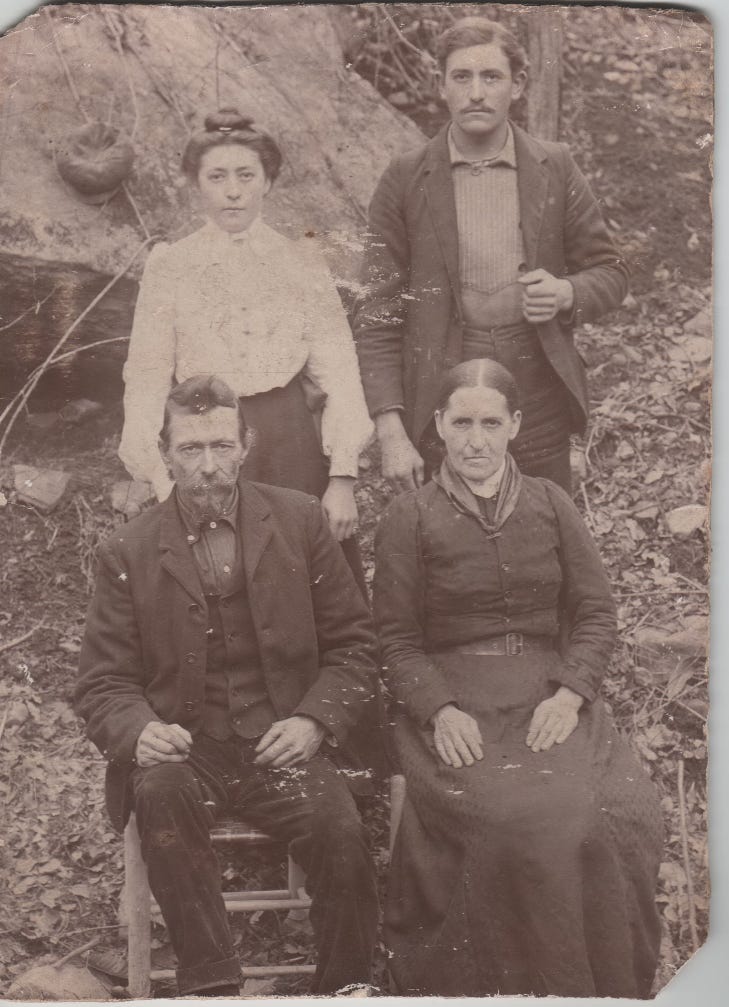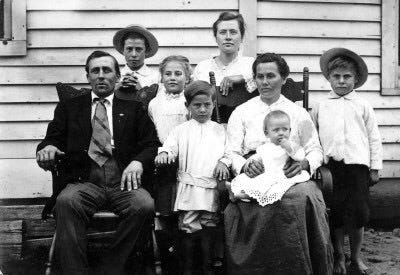A couple of months ago, I was on one of my weekend roadtrips when I stopped at a small mall in Kentucky. It had been a while since I’d been to that mall, I was hungry for lunch, and as someone who is 6’3” sub-200 lbs., I am constantly on the look out for clothes that fit.
I have simple tastes, but it is usually difficult to find anything worth purchasing, and this time was no different. Still, after glancing over the entirety of the men’s department, there wasn’t anything even worth trying on. It was then that I realized that half the section was exclusively beach-y attire. Furthermore, I realized that the same is true for seemingly all of the corporate clothing stores I go to. It was spring in central Appalachia, and my options had been reduced to salmon boardshorts, “Salt Life” beach button-up shirts, and boatshoes. I remember reading an article a long time ago (I believe by Brett McKay) about “dressing for the environment”, something I quickly took to heart, but over the years myself and the society around me have slowly started to dress like residents of California and even New York City.
It should be commonsense to readers that different cultures and societies have different clothing needs. Obvious examples include the cooling, modest thobes of Arabia, and the water-resistant, warm Aran sweaters of North Atlantic fishermen. San Francisco, Los Angeles, and Yosemite necessarily have different styles of dress, though they are all in the state of California. The same is true, and should be true, for Appalachia.
I am not a style guru, but I believe I can aggregate things I’ve read, advice I’ve heard, and my own experience into simple guidelines for how you dress. Far from restrictions, these will help you build a worthy wardrobe. I don’t expect everyone who lives in e.g. eastern Tennessee to wear only styles particular to the region.
This will also come primarily from a central rather than southern or northern Appalachian point-of-view, though most of the material should translate. I am no stranger to North Carolina summers or Pennsylvania winters.
What is an Appalachian wardrobe?
I argue that there are three main influences that created the Appalachian style of dress. Those are American identity, cultural conservatism, and the Appalachian environment.

Appalachia is American because it was the first frontier. The Appalachian mountains formed the western border of the British-American colonies’ settlement. Appalachia was resistant to settlement due to its harsh terrain, and Indians were difficult to drive out. The French and Indian War was fought largely because the British did not want the French do have a foothold in central Appalachia. It was for these reasons that the King barred Americans from completing the settlement of it, but that didn’t stop mountaineers from doing it anyway. It is now centuries later, and Appalachia has remained a distinct region of the American empire. But it must be stated that Appalachian style is defined by American style, and Appalachian style can be perhaps most easily defined by where the two styles differ.
Appalachia is also culturally conservative, meaning that we are slow to change our ways. As a casual admirer of Edmund Burke, I believe this is a good thing. One of the consequences of this conservative culture is a conservatism of dress. One is far more likely to find a crossdresser, bodypainter, or even a generally immodest person in D.C. than an hour west in Shenandoah. On the opposite end of the spectrum, Amish and full-length-skirt-wearing-Pentecostals are a common sight where I’m from. For the average person, however, this merely means that we are not violently tossed to and fro on the tides of fashion.
Finally, Appalachian dress is also of course influenced by its environment. Appalachians live surrounded by steep terrain and wet forests, and are more likely to sprawl to rural areas. We also generally get hotter summers than Europe, and colder winters than the eastern seaboard. These factors helped create our conservative culture, as cultural absorption is slower, and the difficult settlement of the region was done by closely-knit homesteads. This environment affects our dress is many ways, but an obvious effect would be our predilection for workwear, to cope with varying temperatures and in order to remain clean while outside.
An example of a familiar garment that easily meets all three criteria is the standard pair of blue jeans. Blue jeans are an American icon (check), have been pervasively worn by Appalachians for many years (check), and are a good match for the environment described above (and check).
The three attributes listed above are intentionally insufficient to be a specific dresscode, but for those who want a little more guidance, I’ve relayed some general rules down below. I also encourage you to read about men’s fashion with the three attributes listed above kept at top of mind. None of the general rules below are original to me, and you will find many in general fashion columns.
Some General Rules
Take inspiration for color from the environment. I wear a lot of black, grey, brown, and green. These tees from Forty Five are especially great.
Only wear hats outside and in liminal spaces e.g. airports, cars, etc.
You should wear a suit to occasions like weddings and funerals unless it is stated otherwise. If you think a suit may be too formal, a blue suit is slightly more casual and a safe bet.
For casual wear in town, you should wear pants. It could be khakis, chinos, jeans, hiking pants, or something else, but shorts are generally off-limits, no matter how nice the shorts. If it’s too hot for pants, then you need pants made with better material.
Leather boots make great casual shoes (you’ll be wearing pants, remember?). No need to find sneakers in a specific color.
With graphic tees, less is more.
Make sure your clothes fit. Garments of the same size off the rack can have great variations over several measurements, depending on the manufacturer, garment type, and even specific to the SKU. For example, the hip measurement varies wildly between “Large” shirts.
Thematic clothing should fit your environment. No “Salt Life” shorts, desert-themed Howler Brothers shirts, etc.
Layering clothes is a great way to up your style, but it’s especially great for fall and spring. You can don or doff layers as the weather changes throughout the day, and good fabrics won’t have you sweating.
Pay attention to material. Natural is better— not only for looks, but also for weather and hygienic reasons.
An untrimmed beard is always fine for Appalachian men, assuming you can pull the look off.
Button-down collars are casual.
.Get inspiration by looking at those older than you, and even modelling photos in retail websites like Huckberry (with a critical eye of course).






